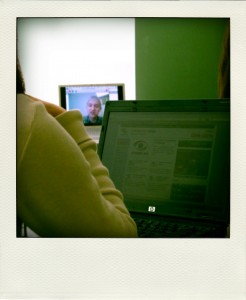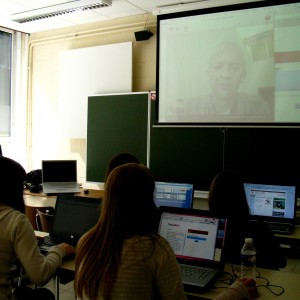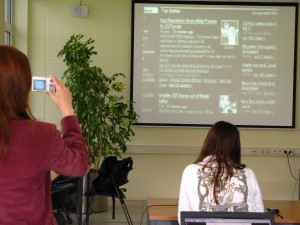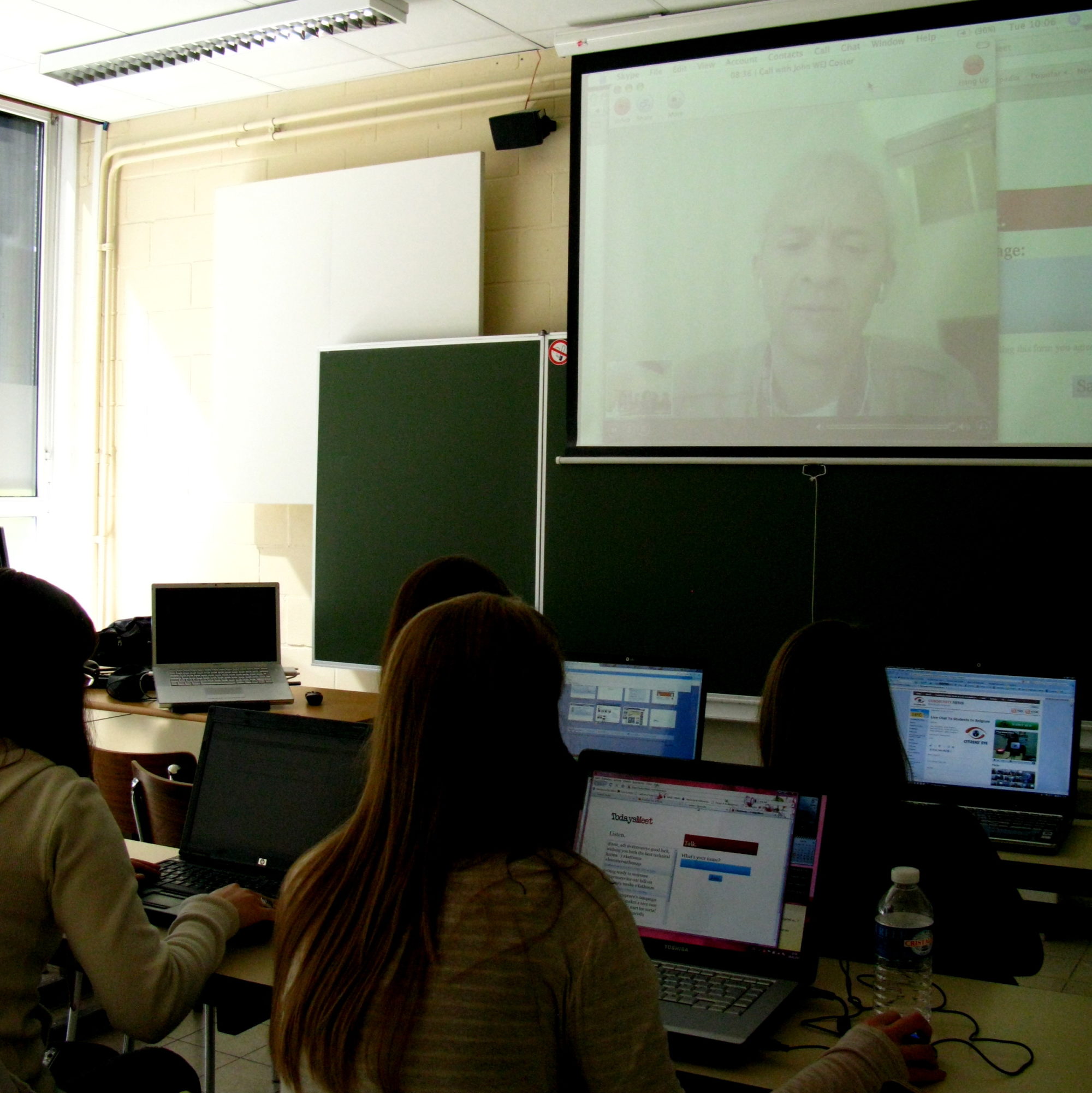 I have started teaching as a Visiting Lecturer at Katho in December 2008. I was returning to the institution that hosted me as an exchange student 5 years earlier. I swapped position in the classroom – from the student’s seat to the lecturer’s spotlight.
I have started teaching as a Visiting Lecturer at Katho in December 2008. I was returning to the institution that hosted me as an exchange student 5 years earlier. I swapped position in the classroom – from the student’s seat to the lecturer’s spotlight.
When I wrote the New Media course syllabus I wanted it to introduce students to the complexities encompassed by new and emerging technologies and the impact they have on current practices. I focused on creative industries because I had a background in the area, side effects had contacts and had plenty of examples to offer.
I modeled the course based on the courses that Katho was already offering to the Erasmus students but I added a syllabus modeled after one that I saw in Scotland at UWS and structured the classes and content based on what industry was usually offering at the time (there were no courses on New Media – intensive, prostate short-time and international that I could identify at the time I did my background research for the course).
This May the 6th edition of the Katho New Media course marked the end of my 3rd year of delivering it. The evaluations came in today (I usually ask students to fill in a quick survey on PollDaddy after we finish the course). The pdf of the evaluation is embedded here. However, since this is an anniversary of the course, I had a quick look at the past evaluations.
Enthusiasm and technology
 Throughout the 3 years of the course delivery, two things were constantly rated as excellent: my use of technology during the course (both to teach it and to get students involved) and my enthusiasm for what I did. It is a great honor to see that even with the challenges of the fast changing technologies that I cover and despite the many and intensive hours students and I have to put during the course, these two were constantly evaluated as excellent with a majority of votes.
Throughout the 3 years of the course delivery, two things were constantly rated as excellent: my use of technology during the course (both to teach it and to get students involved) and my enthusiasm for what I did. It is a great honor to see that even with the challenges of the fast changing technologies that I cover and despite the many and intensive hours students and I have to put during the course, these two were constantly evaluated as excellent with a majority of votes.
Help: encouragement, interest, availability and alternative answers
Among other categories rated as excellent throughout these years are my encouragement to the students, my interest in whether they learned as well as my availability to provide them with answers or alternative examples. Sharing my Skype and Twitter contacts with the students perhaps contributed to such good evaluations. The decision of doing this was influenced by the short time frame of the course as well as by my belief that when embarking on such an exploratory and sometimes alternative route to learning (learning by doing rather than learning by listening and seeing) students need constant encouragement and support. This enabled me to keep in contact with some of them and see the long-term effects of the new media class. From what I can see now, the effects are positive: the graduates are more aware and less afraid of the internet.
Organization and innovation
 Finally, the organization of the course and the balance between theory and practice also were among the categories rates as excellent (or very good) throughout the years. Covering the basics and explaining concepts but allowing students to discover the rules and best practices on their own, seems to be a good combination. It enables students to solidify their knowledge through practice but also encourages them to find alternative routes to reaching similar results. Students of the Katho New Media course appreciated this balance and this organization.
Finally, the organization of the course and the balance between theory and practice also were among the categories rates as excellent (or very good) throughout the years. Covering the basics and explaining concepts but allowing students to discover the rules and best practices on their own, seems to be a good combination. It enables students to solidify their knowledge through practice but also encourages them to find alternative routes to reaching similar results. Students of the Katho New Media course appreciated this balance and this organization.
Similarly, students also enjoyed the online video lectures. Over and over again, semester after semester, the evaluations confirmed that students do feel incentivized by one-off guest lecturers and they appreciate the diversity in delivery method as well as the different knowledge they contribute to the classroom. Direct in classroom observation suggests that attention and interest are not affected throughout the online live talks but rather increase due to the novelty of the technique. Of course, assuming live video lectures will become more mainstream, the scenario will perhaps change. However, finding lecturers that are relevant to the course topic and provide direct, unique examples that aren’t necessarily accessible otherwise to students will maintain their interest and attention at high levels.
So, looking to the past as a way of thinking for the future… I think for now, I’ll strive to maintain my enthusiasm, my support and the innovation factor in what I do. It makes learning easier.
